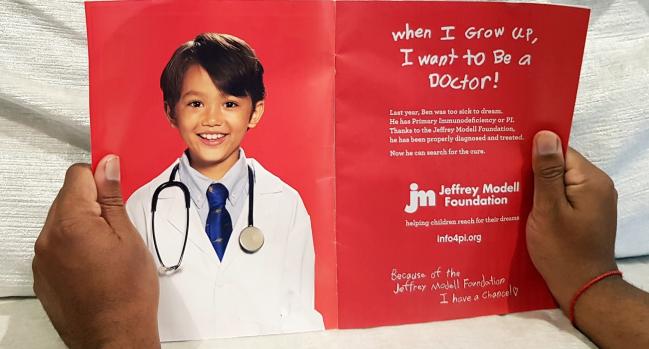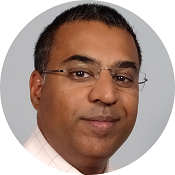A Doctor May or May Not See You Now
Policy makers say assistants, associates, and advanced practitioners plug a hole, but tensions (and confusion) abound.

An advert on the inside cover of Time magazine features a photograph of a young boy wearing a white coat and a stethoscope captioned: “When I grow up, I want to be a doctor!” I see in the boy’s eyes a desire and ambition that takes me back more than 25 years and reminds me of the energy, zest, and pride that I felt on entering medical school, then leaving 6 years later as a qualified doctor.
Those starry-eyed years are harder to remember these days, given the unprecedented levels of discontent within the medical profession on both sides of the Atlantic. In the UK’s National Health Service (NHS) specifically, doctors have felt underpaid and overworked for years, but several events over the past few months have convinced many physicians that their professional status, roles, and even their livelihoods are under attack.
A few weeks ago, in advance of the 75th anniversary of the founding of the NHS, the British government published a long-awaited 151-page review called the NHS Long Term Workforce Plan, which envisions some revolutionary changes to how—and from whom—healthcare happens in the UK. I've tweeted about it here.
The main themes concern training and retention of staff and how to reform delivery of healthcare, but the most eye-catching and controversial proposals would represent a seismic shift in who treats patients. To address the worsening shortage of doctors, the report proposes that nursing, physician, and anaesthesia “associate” roles be expanded, along with those of advanced care practitioners and “consultant practitioners.” The report goes on to advocate for more independent prescribers, expanded nursing apprenticeships, and most contentious of all, the creation of a route to becoming a doctor via an apprenticeship.
What exactly are these associates? The role of the physician “assistant” was first trialed within the NHS two decades ago and dates back to the 1960s in North America. At that time, assistants were not trained to undertake tasks that doctors already performed but were there to help doctors with administrative tasks, giving doctors time to focus on doctoring. In the last 10 years, professionals in both the US and the UK have voted to change the name to “associate.”
Today, the physician associate’s role is much broader. Following a 2-year course, they can take on some of the tasks that doctors already do: take a history from the patient, examine them, order basic investigations, and formulate management plans. Remarkably, given that degree of responsibility, physician associates do not currently have a regulatory body (although the General Medical Council has been tasked with setting this in motion).
In the meantime, there have been growing concerns about oversight. This issue has been highlighted recently in England following the tragic death of a 30-year-old woman presenting in a primary care setting with swelling of the calf and breathlessness, a combination of symptoms that would make most doctors suspect pulmonary embolism. Unfortunately, she was seen and assessed twice by a physician associate who didn’t make the diagnosis and the patient died, her story making national news in the UK, prompting questions about oversight of physician associates in the House of Commons.
And how exactly can you work at the level of a consultant radiologist without being a consultant radiologist?
— platinumpizza™ (@Xeon4f145d96s1) June 16, 2023
Hopefully the @RCRadiologists can address this. pic.twitter.com/AXC6bsTvfk
Critically, neither the patient nor her family were aware that she had been seen by a physician associate and not by a qualified doctor: the title “physician associate” is not an understood term and the public is not aware of the vastly truncated training the role requires. It’s hard not to feel that some of this confusion is intentional. Several recent advertisements for jobs in the NHS have created a public outcry, seeking such things as “consultant radiographer in thoracic imaging” who would “work autonomously at a level equivalent to a consultant radiologist.”
Another sought a “senior advanced critical care practitioner” stipulating that the individual should have “skills and knowledge equivalent to that of a middle grade doctor,” but in the same advert said that such an individual would make “complex autonomous diagnoses and management decisions about patient care, up to and including end of life discussions.” In both these cases—and there have been many other examples—the adverts discuss autonomous practice, but there is a blurring of the boundaries between roles traditionally only undertaken by doctors, including consultants, and those undertaken by allied health professionals (AHPs). Middle grade doctors, it’s worth pointing out, are typically doctors in training who do not make autonomous decisions about end-of-life care.
Other AHPs, such as nurses, physiotherapists, occupational therapists, pharmacists and radiographers, undergo training that doctors do not receive, they possess unique skill sets that doctors do not have, and do jobs that doctors could not do. Physician and anesthesia associates, however, are being trained to try to do what doctors already do—leading to rising tension between anesthesia trainees and anesthesia associates, and between medical trainees and physician associates.
Social media is awash with anecdotes from hospitals in which doctors in training have found themselves unable to take part in certain operations or perform certain procedures because these are already being done by “associate” practitioners. A prime example was the furor that erupted after Glenfield Hospital tweeted a congratulations to a nurse for performing a TAVI procedure as the lead operator, as reported by TCTMD. Concerned doctors are warning that this kind of “scope creep” will produce greater disillusionment amongst medical staff and growing divisions amongst those who ought to be working together for the benefit of our patients.
Training as a physician associate requires a science-related undergraduate degree, followed by a 2-year course that includes at least 1,600 hours of clinical training, including 350 hours in hospital medicine and a minimum of 90 hours in other settings, such as surgery or pediatrics—far fewer hours than those racked up by doctors in training.
1/6
— Bashir Alaour (@BashirAlaour) June 21, 2023
December 2021, I tweeted my first TAVI procedure during my final year of training. For me, it was a coronation ceremony, a crowning of over 20 years of studying and training, and nearly 1600 invasive cardiology procedures including angiography, PCI, simple and complex pacing pic.twitter.com/F4IxTkayo8
Doctors who point to the protracted “struggle” of becoming a doctor can invoke accusations of arrogance, of being conceited or having a superiority complex, but the reality is, the journey is long and grueling. To get the grades required to even be considered for acceptance to medical school the hard work must start around age 14, then those exceptional grades need to be sustained all the way through university and training. Grades alone are by no means all that is necessary: extracurricular activities and volunteering that demonstrate commitment to medicine and healthcare are essential.
If accepted, medical training programs themselves are approximately twice the length of many university degrees and more costly: most new doctors graduate with significant levels of debt. If one then does successfully pass medical school final examinations and enter the world as a qualified doctor, there is then usually at least a further decade of postgraduate training required, during which a junior doctor lives as a nomad, moving multiple times across the entire region or country. I qualified as a doctor in 2002 and in the 13 years before becoming a fully-fledged consultant, I moved house 14 times! Postgraduate exams need to be prepared for and undertaken whilst working as a doctor—these exams are tough, expensive, and add significant stress on top of busy clinical work.
Why do I spell this all out? Because, after this unique and difficult career path, seeing other individuals who have not had to undertake the same journey being allowed to do the same things is, for many of us, a difficult pill to swallow.
The NHS Long Term Workforce Plan also includes proposals to build new medical schools and train more doctors, but it’s clear the government believes the significant shortage of doctors will need to be addressed by expanding the numbers of other professionals to do the jobs traditionally undertaken by physicians. Rightly or wrongly, many doctors are upset that their Royal Colleges and professional societies, rather than trying to protect their members’ interests and livelihood, are actively helping to develop careers for other AHPs who will go on to do the work that is, today, their purview. Undergraduate and postgraduate medical training is a long, arduous, intellectually challenging, frequently lonely, and often very expensive journey—will the children of the future still dream of being doctors if there are less onerous paths to careers offering similar work?
If physician associates are going to work alongside physicians, and nursing associates alongside nurses, the NHS must formally create regulatory bodies and standards for associates, clearly differentiate their roles, and be transparent with the public about the differences. Most challenging of all, the NHS must create a culture in which healthcare professionals can all work together in harmony.
Off Script is a first-person blog written by leading voices in the field of cardiology. It does not reflect the editorial position of TCTMD.
Benoy Shah, MBBS, MD(Res), is a consultant cardiologist at University Hospital Southampton NHS Foundation Trust, England, and the clinical lead…
Read Full Bio

Comments